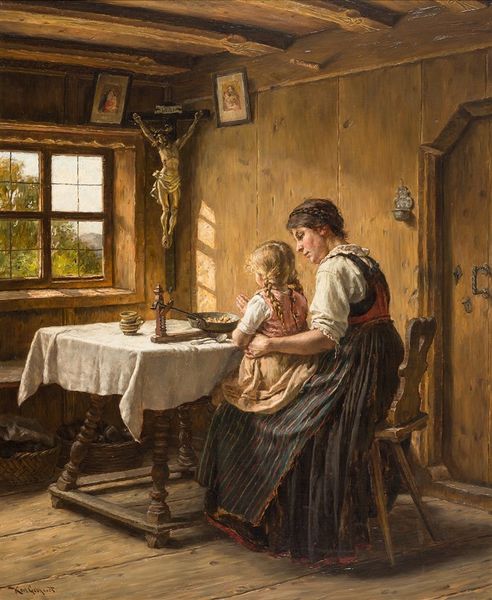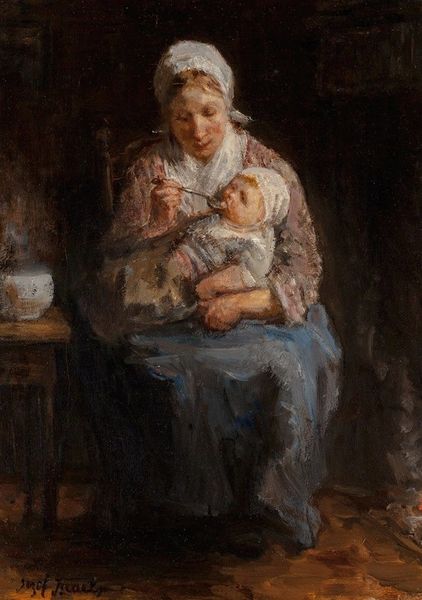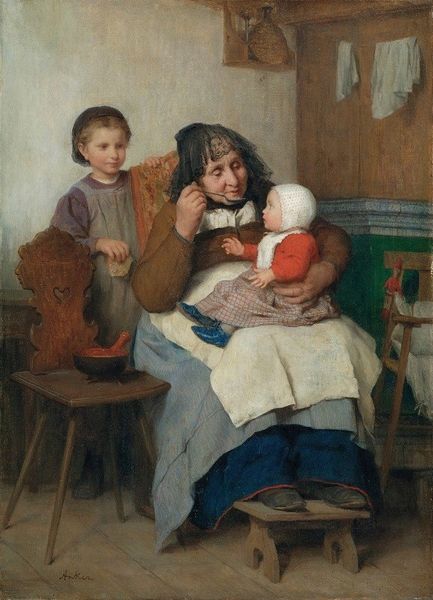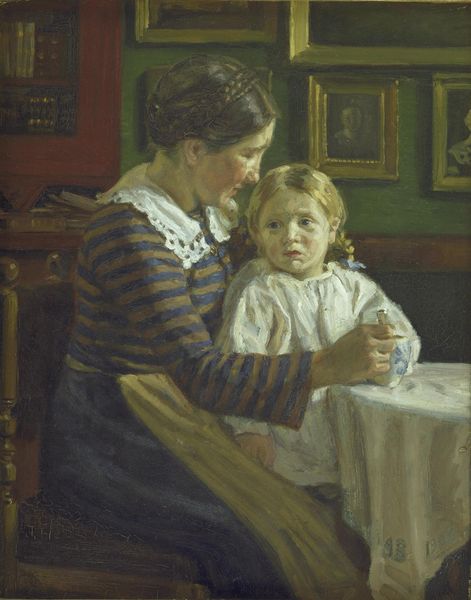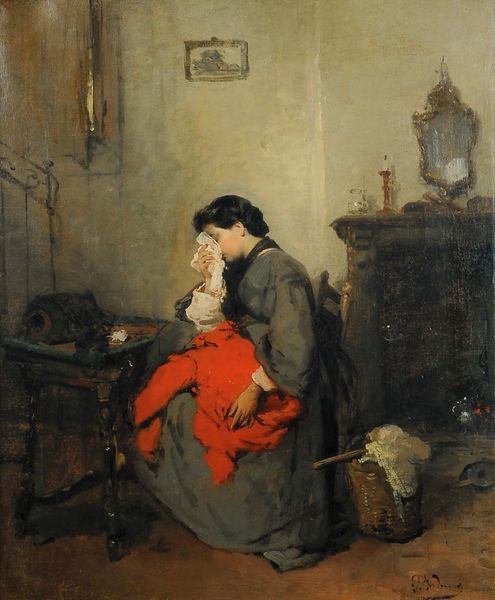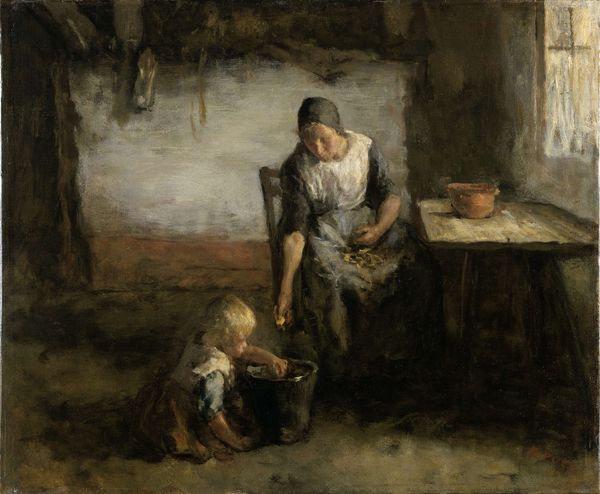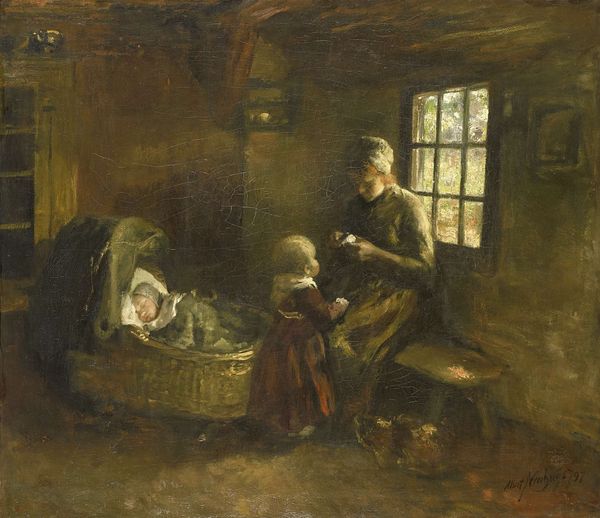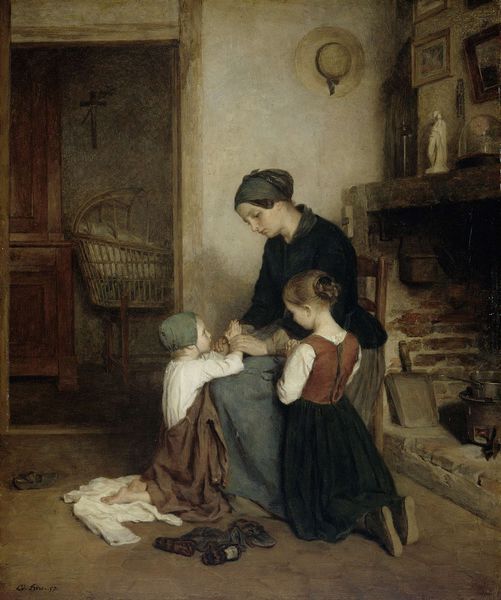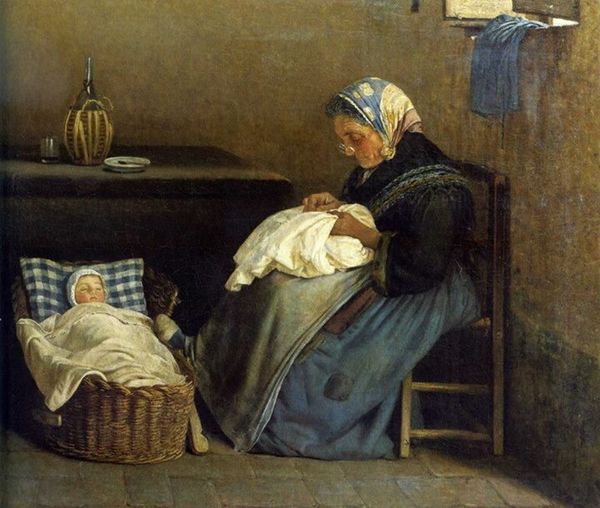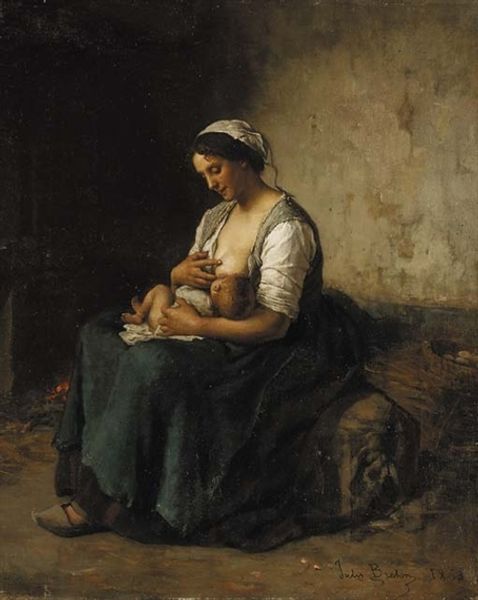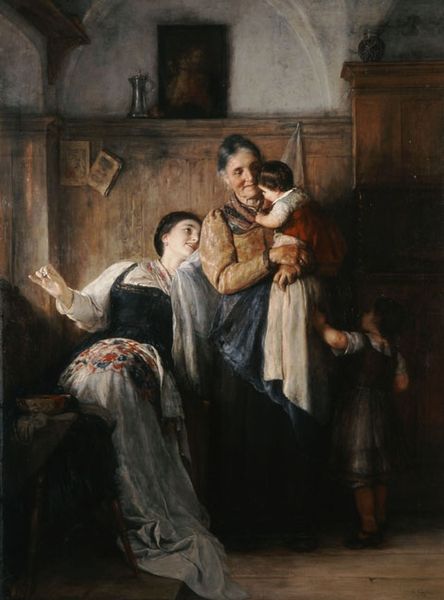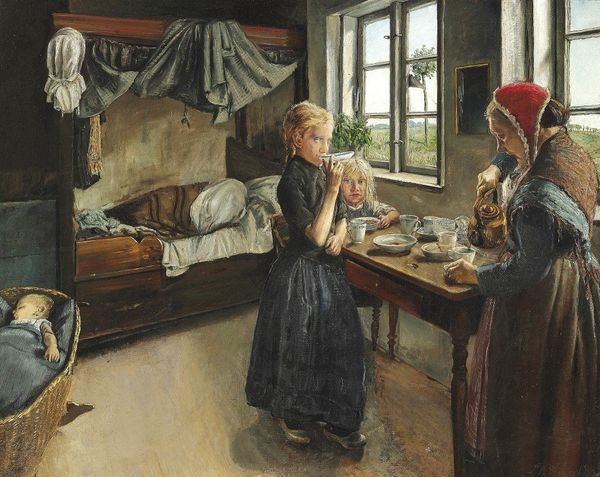
Copyright: Public Domain: Artvee
Curator: Waldmüller’s “Sunday Rest,” or "Sonntagruhe," painted in 1859, offers a glimpse into the quiet moments of 19th-century rural life. The scene depicts a woman cradling a child, bathed in soft light. Editor: The scene is so intimate! The light and shadows almost create a separate world for the figures. It gives the interior a golden quality that focuses attention entirely on the mother and child. Curator: Yes, there is definitely an emotional core here, an articulation of mother-child bonding, but I see how this image could be analyzed through the social structures of labor and piety. Think about the domestic space and its representation of feminine virtue at this particular moment in the romantic period. The placement of the crucifix signals the religious significance inherent to this portrayal. Editor: True. The material elements, like the rustic table and window frame, aren't mere props but indicators of their working-class status. Consider the production of the oil paint itself. Who had access to it, and what does its usage suggest about Waldmüller’s commission, the sitter, and their relative standing in that rural community? And let's not forget the clothes they are wearing - likely hand-made. Curator: Those hand-made details evoke such intimacy; Waldmüller seems intent on connecting us with the subject's lived experience. The way the sunlight streams in might represent divine intervention in the humblest settings. How might this be received against the backdrop of the industrial revolution and the shifting roles of women? Editor: That divine light also reveals the texture of the walls, the simplicity of the table—reminders that this intimate moment is supported by layers of tangible, often overlooked labor. This idealized, Romantic view obscures the back-breaking toil of that social class, if we are honest. Curator: That's a valuable perspective. Analyzing the layers of societal structures and the cultural values embedded in domestic scenes—it deepens our understanding beyond sentimentality. I notice in his choices of material and style, he brings so many societal discussions into the work without relying on grand historical narratives. Editor: Indeed! When we pull at the threads of material and social contexts, this so-called Sunday rest comes undone. We start asking the important questions about not only what is being presented, but who this presentation actually serves. It is as simple as that.
Comments
No comments
Be the first to comment and join the conversation on the ultimate creative platform.
